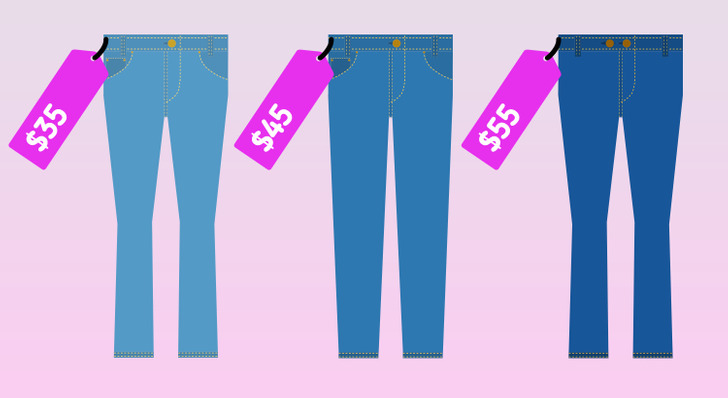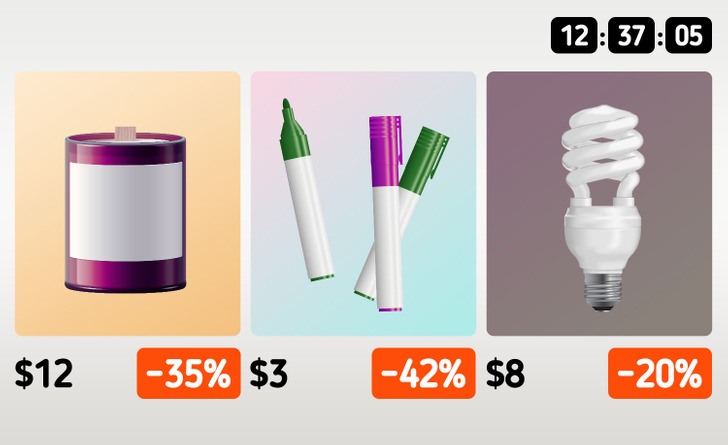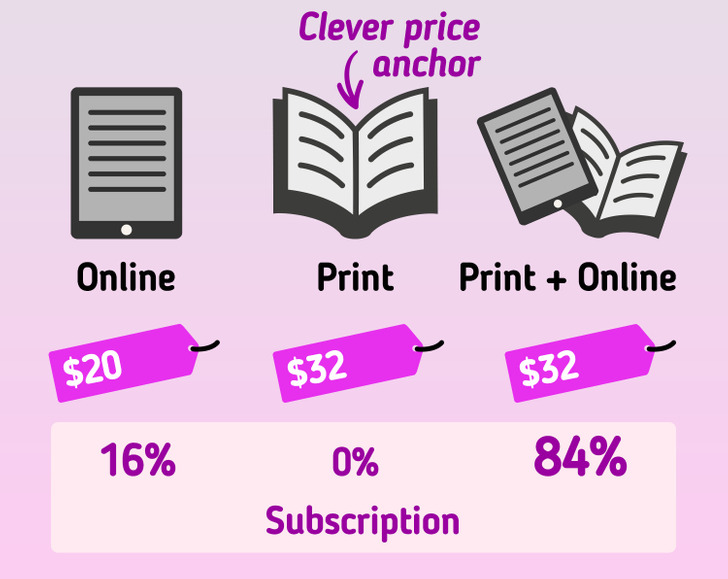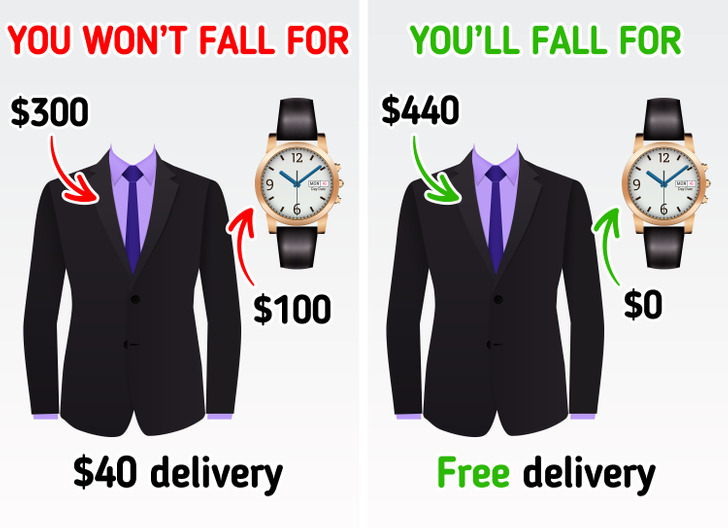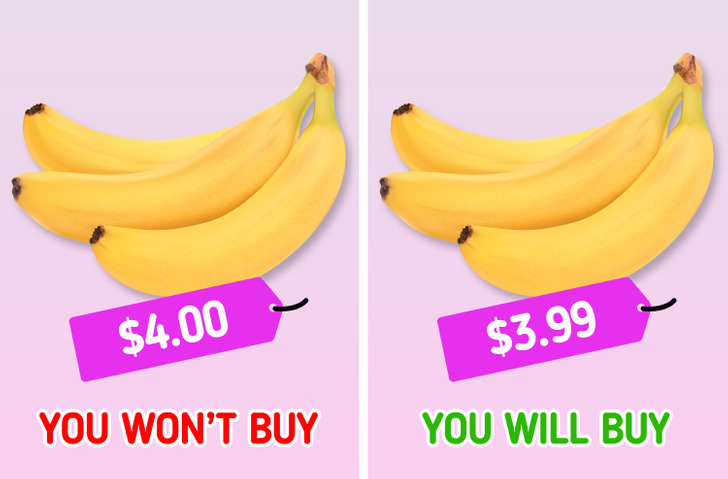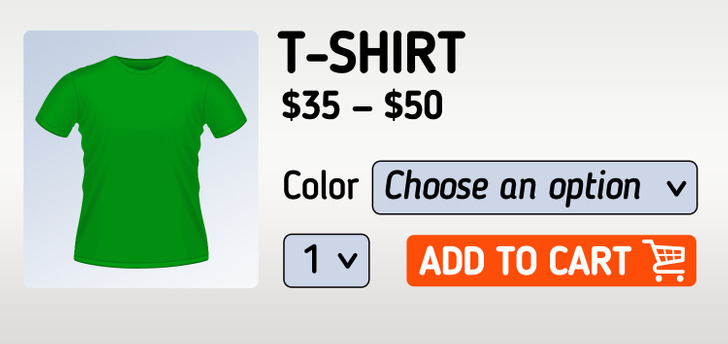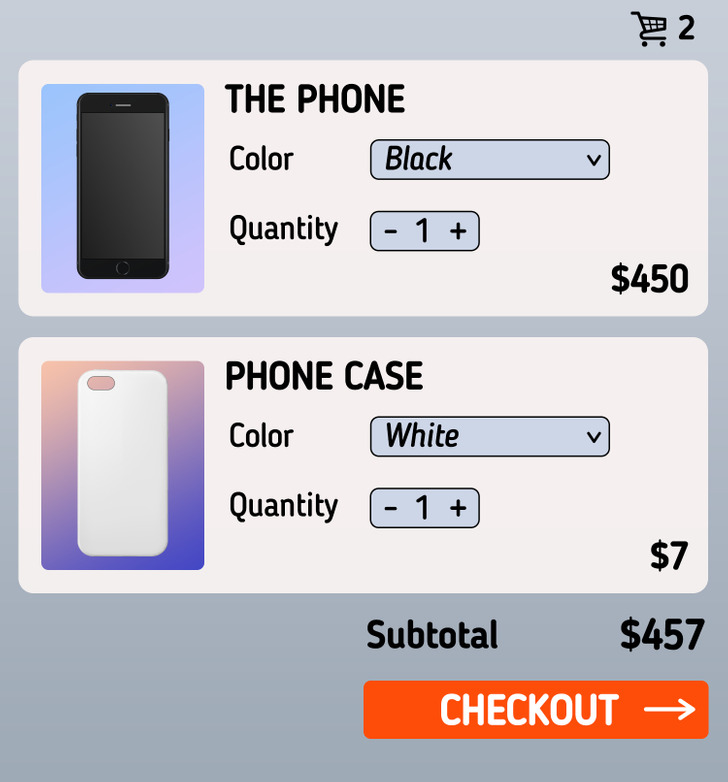7 Online Shopping Tricks We All Fall For
Many people can confirm that online shopping has become an integral part of their lives. It’s growing every day. Statistics say that more than 75% of people buy something on the Internet at least once a month. However, marketing tricks we fall for every day are also developing.
5-Minute Crafts will reveal some of them.
1. The compromise effect
People are likely to choose the middle-priced item, especially when it comes to seemingly unimportant purchasing. Customers think that it’s safe to go for this price, and nothing can go wrong.
For example, you may have to choose between 3 pairs of jeans without knowing much about their brand or quality. The prices are $35, $45 and $55. Most likely, you’ll choose the second pair for $45. Using this trick, sellers can change prices a bit and make you buy the item they want you to.
2. Encouraging impulse buying
While shopping online, you may come across a “limited-time sale” or “almost out-of-stock” items.
This can also be a marketing trick. Such situations force you to decide immediately without thinking through anything. This way, you can spend more money than you initially wanted to.
3. The decoy effect
If you see a big difference in prices, it’s obviously easier to decide which one to buy, as you have a reference point. However, if the seller creates an inferior dummy option as a reference point, it can make you opt for the more expensive item.
For example, one newspaper had only 2 subscription options: “online-only” and “print+online.” The majority of readers chose the cheapest “online-only” option. Then the “print-only” variant was added. It cost the same as the “print+online” package. The popularity of the more valuable subscription raised dramatically.
4. Giving you something for free
You may get an offer to receive something for free while buying an item. Just remember that you actually pay for those goods by spending more on the initial one.
Psychologically, anything that’s granted for free looks attractive to us. We like to think we’re getting a great deal. So, although retailers just wrap shipping costs into the price, just seeing the word “free” can have a significant impact on our purchasing decision. The same strategy works for free delivery.
5. Prices ending in 99
We tend to buy the item that costs $3.99 rather than the one for $4.00, even though the difference is just 1 cent. As we read from left to right, we see the left digit first and instinctively focus on it. Due to that, we buy more low-value goods with prices that end in 99.
6. Hiding the price
While shopping online, we usually see a price near the description. However, some shops or services hide it till the end. For example, they make you click through several screens to find out how much the item costs.
This trick makes you click “buy” and takes the opportunity to compare it with other offers.
7. Sneaky shopping additions
You might be surprised to realize that you have some extra items in your online shopping cart. Sometimes those items are automatically added since they’re commonly bought together with something that you chose yourself.
For example, they can automatically add a phone cover or screen protector when you buy a new phone — however, you may not need them.
